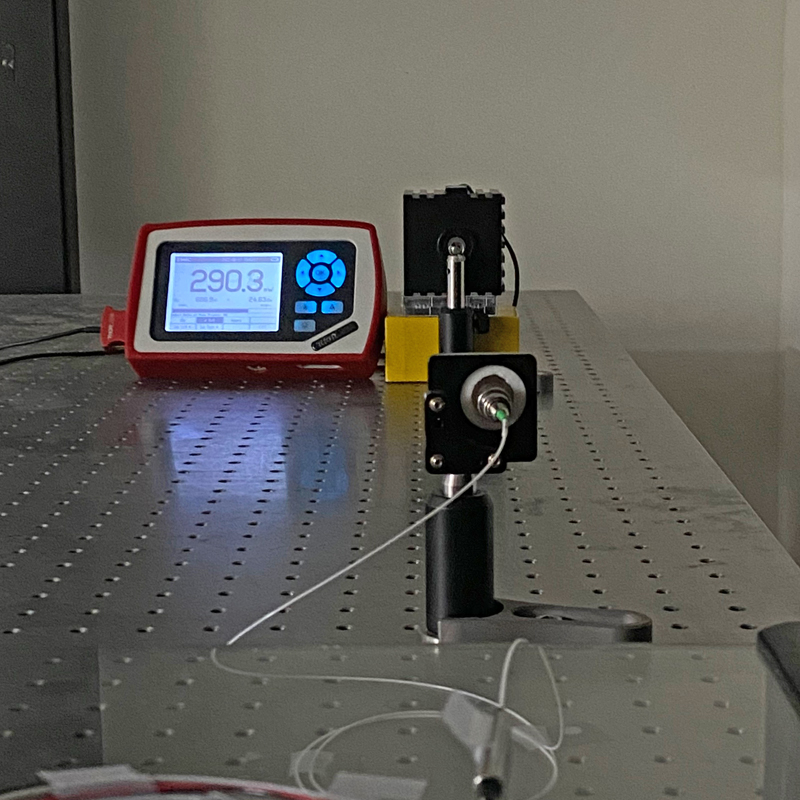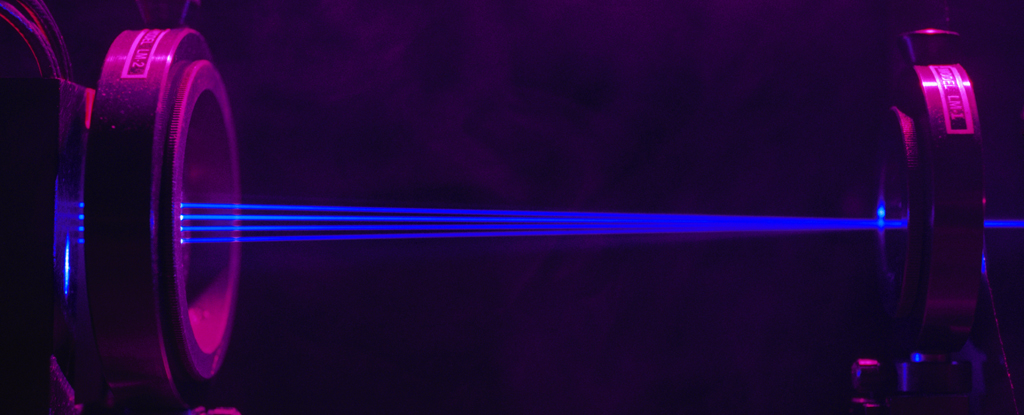Products You May Like
We could one day charge our phones and tablets wirelessly through the air, thanks to newly developed technology.
Researchers have used infrared laser light to transmit 400mW of light power over distances of up to 30 meters (98 feet). That’s enough juice to charge small sensors, though in time it could be developed to charge up larger devices such as smartphones too.
All this is done in a way which is perfectly safe – the laser falls back to a low power mode when not in use.
The technical term for it is distributed laser charging, and the particular type developed here manages to be safer and able to go further than previous experiments with similar sort of wireless power transmission technologies.
“While most other approaches require the receiving device to be in a special charging cradle or to be stationary, distributed laser charging enables self-alignment without tracking processes as long as the transmitter and receiver are in the line of sight of each other,” says electrical engineer Jinyong Ha, from Sejong University in South Korea.

Ordinarily, the light-bouncing components making up a laser cavity would be together in the same device. Here they are separated into a transmitter and a receiver, meaning the laser cavity forms in the space in between so long as the transmitter and receiver are in sight of each other.
In the experimental setup, an amplifier transmitter specially treated with a silverywhite metal called erbium was set up 30 meters away from the receiver, which was outfiited with a photovoltaic cell to convert the light signal into electrical power.
At just 10 millimeters by 10 millimeters (0.4 inches by 0.4 inches), this receiver is small enough to fit into compact gadgets, such as sensors. Smaller smart home devices, such as motion or temperature sensors, could be charged wirelessly this way, for example.
One day you could walk into an airport and charge your phone while you use it – no cables or plugs required. Before that happens though, the team will have to scale up the level of energy that the system is capable of transferring.
Part of that process could involve upgrading the photovoltaic cell in the receiver, so that it was able to convert more of the laser light into electricity. Another potential improvement could be making the setup work with multiple receivers at once.
With a central wavelength of 1550 nanometers, the laser is in the safest part of the infrared spectrum and can’t damage human skin or eyes. The scientists made a number of further refinements to improve the efficiency of the system, to make sure as much energy was transferred as possible.
“In the receiver unit, we incorporated a spherical ball lens retroreflector to facilitate 360-degree transmitter-receiver alignment, which maximized the power transfer efficiency,” says Ha.
“We experimentally observed that the system’s overall performance depended on the refractive index of the ball lens, with a 2.003 refractive index being the most effective.”
It’s still early days for the technology, but it’s not just with personal electronics that wireless energy transfer could prove beneficial – it could also make a huge difference in industrial environments where cabling is hard to put together or maintain.
“Using the laser charging system to replace power cords in factories could save on maintenance and replacement costs,” says Ha.
“This could be particularly useful in harsh environments where electrical connections can cause interference or pose a fire hazard.”
The research has been published in Optics Express.
